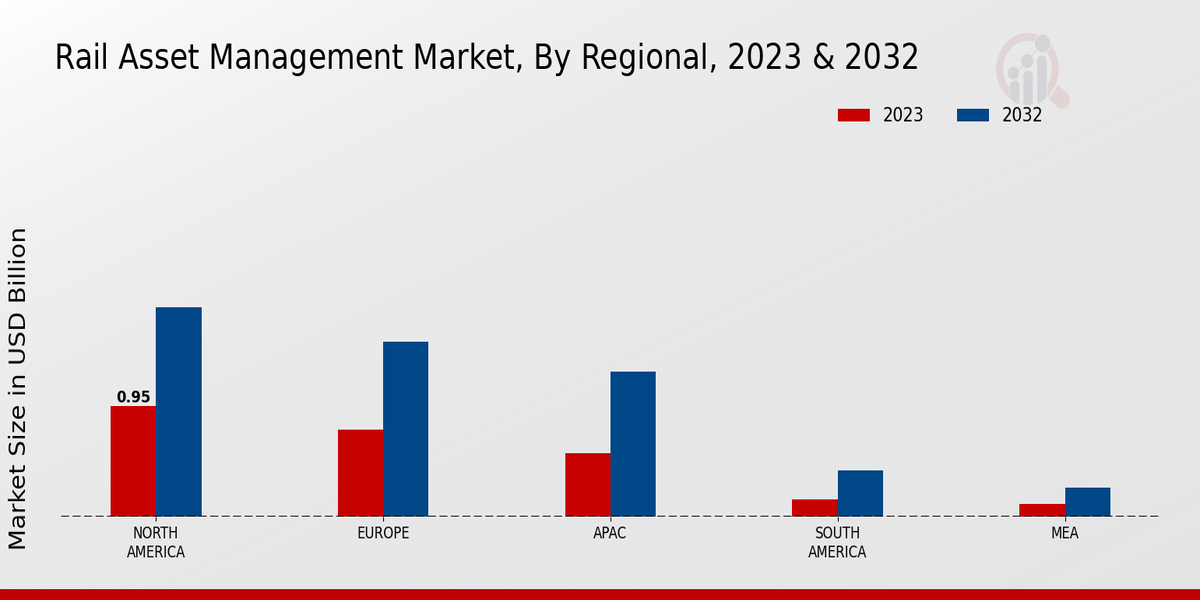Government Initiatives
Government initiatives play a pivotal role in shaping the Global Rail Asset Management Market Industry. Various countries are investing in rail infrastructure to enhance connectivity and promote sustainable transportation. For example, the European Union has allocated substantial funding for rail modernization projects, which includes asset management systems. These initiatives not only improve service quality but also encourage private sector participation. As governments prioritize rail transport, the demand for efficient asset management solutions is expected to rise, further propelling market growth. This trend aligns with the projected increase in market value, indicating a robust future for rail asset management.
Increased Urbanization
Increased urbanization is a significant driver of the Global Rail Asset Management Market Industry. As urban populations grow, the demand for efficient public transportation systems intensifies. Rail networks are often seen as a viable solution to alleviate congestion and provide reliable transit options. Cities worldwide are investing in rail infrastructure, leading to a heightened need for effective asset management strategies. This urbanization trend is expected to bolster the market, with a projected value of 3.44 USD Billion in 2024 and a potential increase to 6.21 USD Billion by 2035. The focus on urban rail systems is likely to enhance the adoption of asset management technologies.
Market Growth Projections
The Global Rail Asset Management Market Industry is poised for substantial growth, with projections indicating a market value of 3.44 USD Billion in 2024, expected to rise to 6.21 USD Billion by 2035. This growth trajectory suggests a compound annual growth rate (CAGR) of 5.51% from 2025 to 2035. Factors contributing to this expansion include technological advancements, government initiatives, and increasing urbanization. The market's evolution reflects a broader trend towards optimizing rail operations and enhancing asset management practices. As stakeholders recognize the importance of efficient rail systems, the demand for innovative asset management solutions is likely to intensify.
Technological Advancements
The Global Rail Asset Management Market Industry is experiencing a notable transformation driven by technological advancements. Innovations such as predictive maintenance, Internet of Things (IoT) integration, and advanced analytics are enhancing operational efficiency. For instance, rail operators are increasingly utilizing data analytics to monitor asset conditions in real-time, thereby reducing downtime and maintenance costs. This trend is expected to contribute to the market's growth, with projections indicating a market value of 3.44 USD Billion in 2024, potentially reaching 6.21 USD Billion by 2035. The adoption of these technologies is likely to drive a compound annual growth rate (CAGR) of 5.51% from 2025 to 2035.
Market Challenges and Opportunities
The Global Rail Asset Management Market Industry faces various challenges, including budget constraints and the need for skilled personnel. However, these challenges also present opportunities for innovation and growth. Companies are increasingly seeking cost-effective asset management solutions that leverage technology to optimize operations. For instance, the integration of artificial intelligence and machine learning can enhance decision-making processes and improve asset lifecycle management. As organizations navigate these challenges, the market is poised for growth, with projections indicating a CAGR of 5.51% from 2025 to 2035. This dynamic environment suggests that while obstacles exist, they may also catalyze advancements in the industry.
Sustainability and Environmental Concerns
Sustainability and environmental concerns are increasingly influencing the Global Rail Asset Management Market Industry. As nations strive to reduce carbon emissions and promote eco-friendly transportation, rail systems are being recognized for their lower environmental impact compared to road transport. This shift is prompting rail operators to invest in asset management solutions that optimize resource utilization and minimize waste. The focus on sustainability is likely to drive the market's growth, as organizations seek to align with global environmental standards. Consequently, this trend could contribute to the anticipated market expansion, with projections suggesting a rise to 6.21 USD Billion by 2035.























